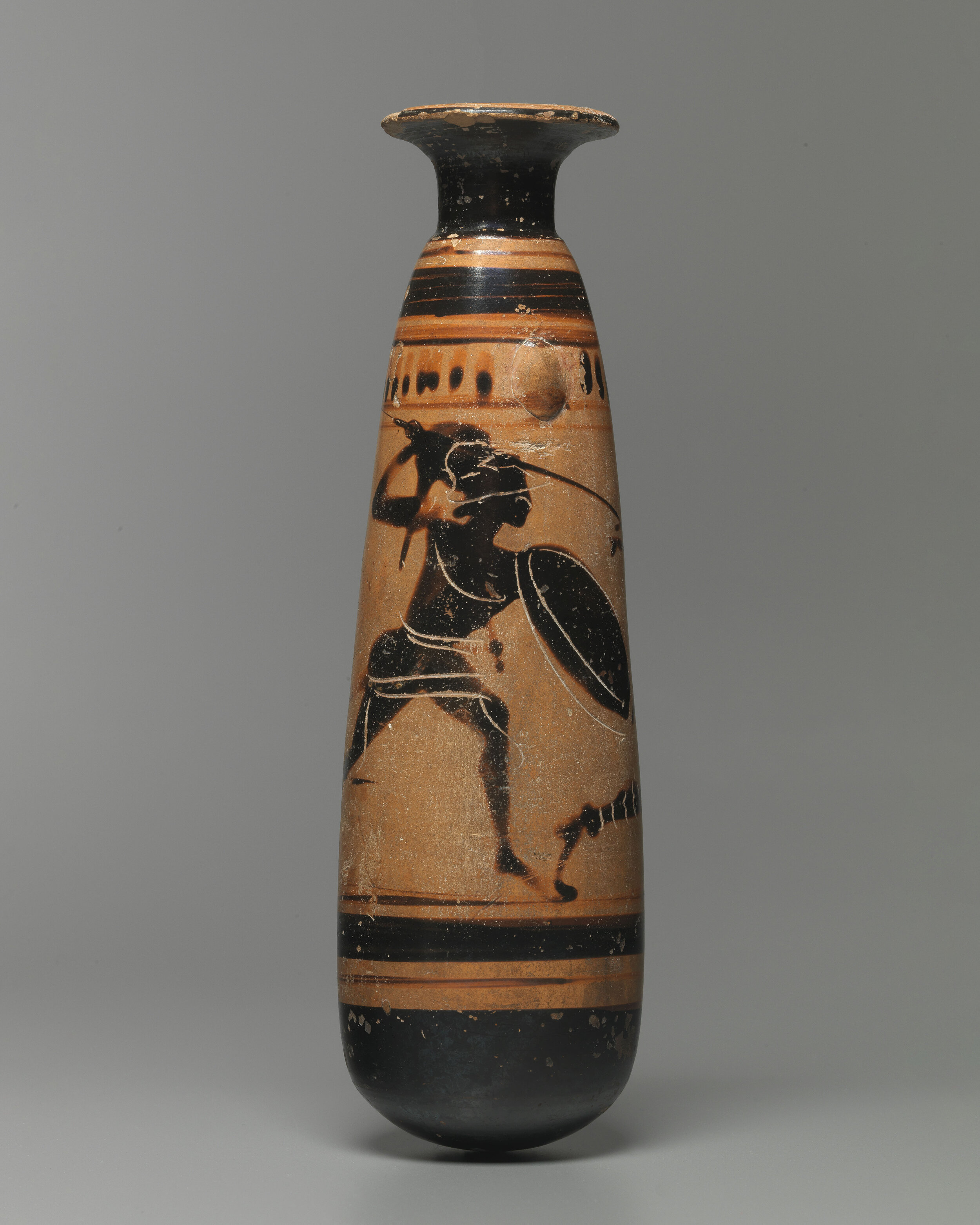Ancient Attic Greek Alabastron depicting the Battle of Achilles and Penthesilea


Ancient Attic Greek Alabastron depicting the Battle of Achilles and Penthesilea
Greek, Attic, 500-480 B.C.
Terracotta
H: 15.3 cm
Serial: 31611
PROVENANCE: Originally from the Louis-Gabriel Bellon collection (1819 - 1899), France.
Slender vessel with an elongated body, a narrow neck, a flat flared mouth and a rounded base. This type of vessel, known as “alabaster”, was used to store perfumed oil. The decoration is painted in the so-called black-figure technique, in which the figures were represented with a slip of fine clay that vitrified during the fi ring process and gave the figural scene this lustrous black rendering. The details were later added by simple incisions that removed the glaze and revealed the red color of the clay. While the clay-colored mouth of the alabaster is undecorated, the neck and the base are covered in black glaze. A broad painted band delimits the upper body and another below creates the ground for the illustrated scene. A row of languettes adorns the upper alabaster, at the same level where two small tenons, looking like miniature handles, are placed. The scene depicts two fighting figures. One, wearing a chiton and a Corinthian helmet, is armed with an oval shield and a sword held by a belt around the waist. He brandishes his long spear in the direction of his opponent, who appears to be hit, raises a hand and falls to the ground. This second figure, dressed in the traditional Scythian long-sleeved garment and pants, wears a Phrygian cap. A bow and arrow are clutched in the figure’s lowered left hand, a quiver hanging from the right hip. This scene can be identified as the famous battle between the Greek hero Achilles and the Amazonian queen Penthesilea before the besieged city of Troy, a mythological episode attested by much pottery and sculpture. With this recurring iconographic pattern, which pits a heavily armed Greek hoplite against a “foreign” (Scythian) archer, the painter has represented the fi nal moment of the battle, when the Amazonian queen is killed by the victorious Greek hero who, paradoxically, falls in love with her. The scene is particularly dynamic, marked by the physical and sartorial contrast between the two figures.
CONDITION: Complete vessel in excellent condition. Minor chips on the mouth, several small chips on the neck and on the body.
BIBLIOGRAPHY: BOARDMAN J., Athenian Black Figure Vases, London, 1974. Lexicon Iconographicum Mythologiae Classicae (LIMC), Vol. I, Zurich-Munich, 1981, s.v. Achilleus, XXII. Achilleus und Penthesilea: pp. 162 ff., especially nos. 722 (P. with a bow), 723 (position of both protagonists), 729 (P. with a bow, garment of P., position of both protagonists), 734 (idem). Lexicon Iconographicum Mythologiae Classicae (LIMC), Vol. VII, Zurich-Munich, 1994, s.v. PenthesileIa, C. Penthesilea und Achill: pp. 297 ff., especially nos. 17 (= Achilleus no. 723), 32 (= Achilleus no. 732, garment of P.). On iconographic patterns, see: LISSARRAGUE F., L’autre guerrier: Archers, peltastes, cavaliers dans l’imagerie attique, Paris-Rome, 1990, pp.97 ff.





